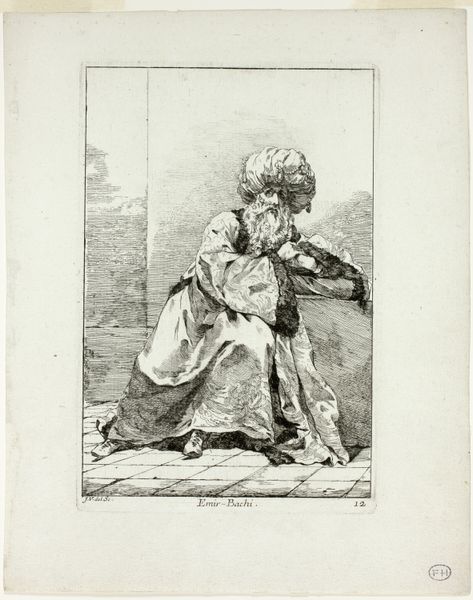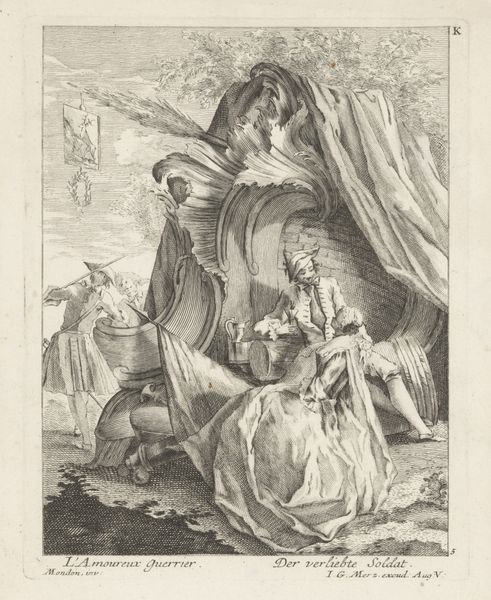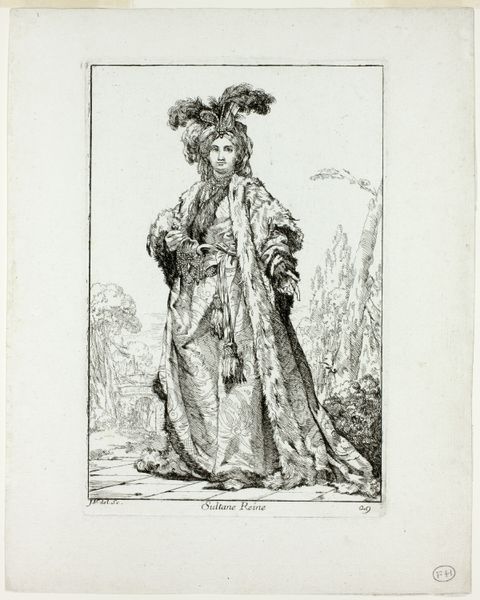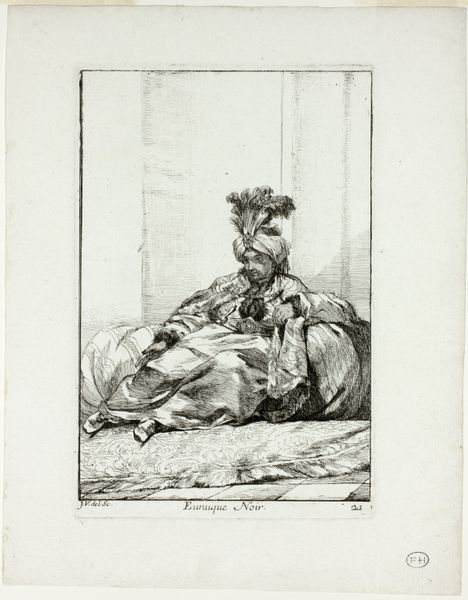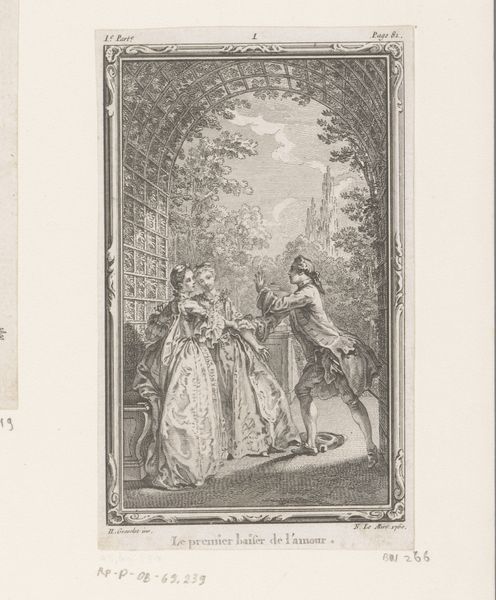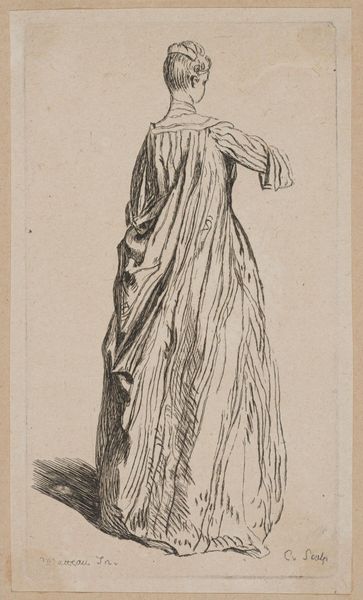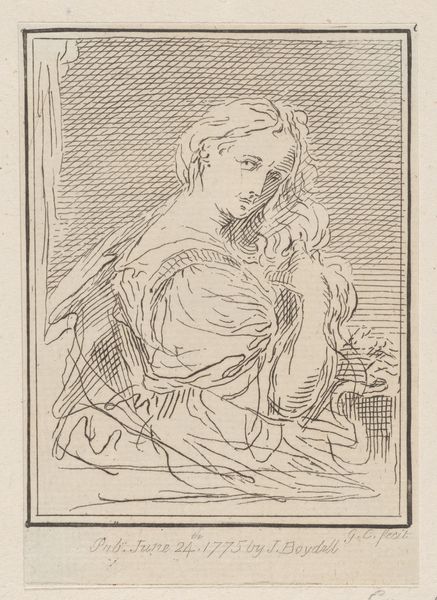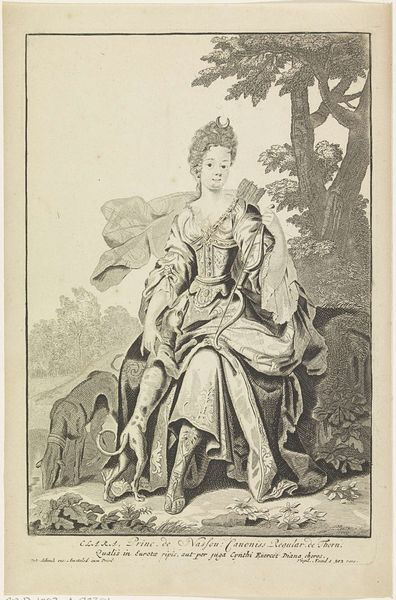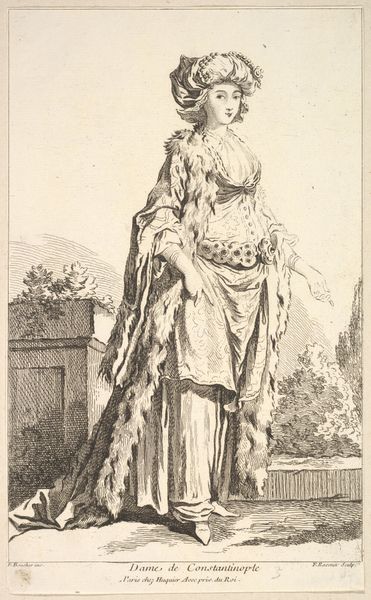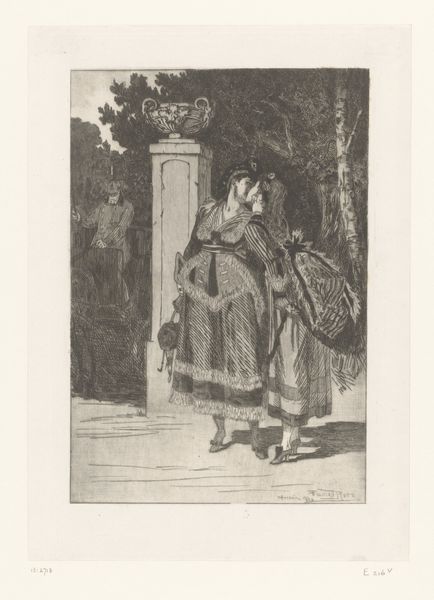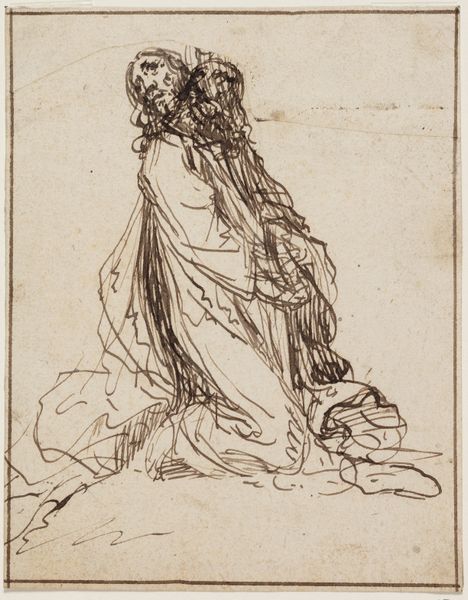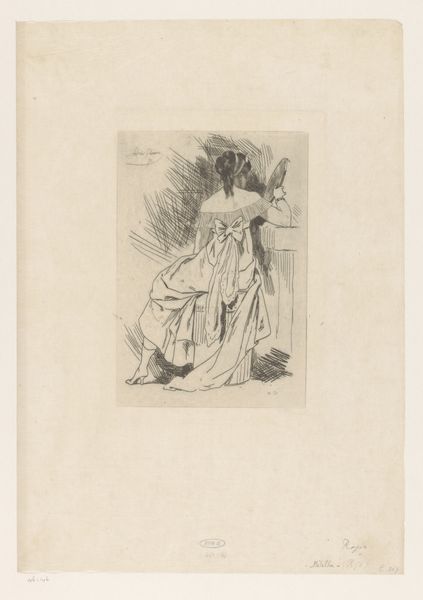
drawing, print, etching, paper
#
portrait
#
drawing
#
baroque
# print
#
etching
#
figuration
#
paper
#
france
#
genre-painting
Dimensions: 112 × 71 mm (image); 125 × 79 mm (plate); 146 × 95 mm (sheet)
Copyright: Public Domain
Curator: Well, this looks melancholic, doesn’t it? Like a faded dream captured in ink. Editor: Indeed. What we’re looking at is “Figures de modes,” or “Figures of Fashion,” an etching on paper by Jean-Antoine Watteau, dating back to around 1710. You can find this treasure at the Art Institute of Chicago. Curator: Fashionable figures, perhaps, but something about the downward glance and the shadowy lines suggests more than mere dress-up. The urn and distant landscape certainly add to a sense of longing, or maybe just plain boredom. Editor: Absolutely. Let’s consider the symbols. Watteau uses the trappings of wealth—the elaborate dress, the cultivated landscape—but these become metaphors for the transient nature of beauty and the fleeting quality of fashionable life. Notice how the etching captures the folds and textures; even fashion itself becomes another layer of symbolism. Curator: Yes! The way her gown seems to almost melt into the landscape behind her… It's like she's fading away before our eyes. I'm also struck by the smoking pipe. It lends a rather unconventional note to this image of upper-class leisure. Almost provocative, one could say. Editor: It's intriguing, certainly. Pipes were, in Watteau’s time, still relatively novel objects associated with pleasure and leisure, but perhaps also with a masculine identity in a rather subtle and unexpected way. But look closely. Are we sure it is smoking, or is it possible it's not yet lit, or extinguished? Even in that detail, there is an ambiguity. It might be more of a pensive prop than an indulgence. Curator: Point taken! This lends itself well to so many interpretations. Watteau wasn’t simply depicting fancy people, was he? He was using these people as a canvas to explore complex feelings about time, identity, and the ever-shifting currents of culture. Editor: I’d agree wholeheartedly. "Figures de modes," far from being just a fashion plate, speaks volumes about the enduring human desire to make meaning from the beautiful, however temporary it may be.
Comments
No comments
Be the first to comment and join the conversation on the ultimate creative platform.

